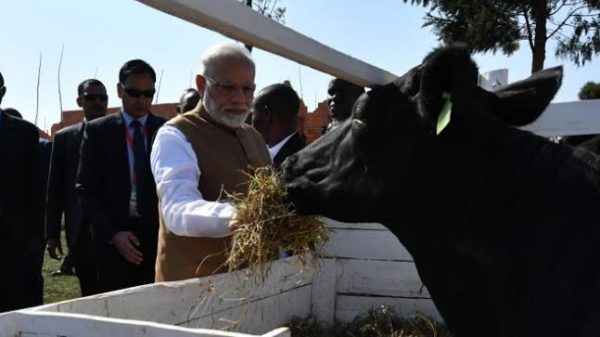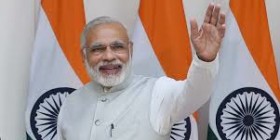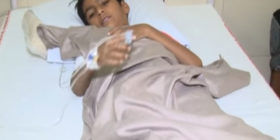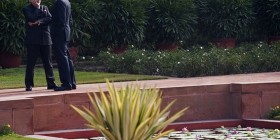Cow has been a cultural and utility animal in India for ages. It was considered even as a unit of wealth during Rig Vedic days. But in recent times, cow has acquired political capital. People have been killed in the name of cow protection. But the animal has a different story to tell from a country just across Indian Ocean on a different continent. That country is Rwanda in Central Africa where Prime Minister Narendra Modi today gifted 200 cows to local people to support Rwandan President Paul Kagame’s Girinka programme.
Cow is equally revered in Rwanda and is considered the best gift for which the Rwandan government runs an ambitious scheme. Called Girinka programme, it was launched by President Kagame in 2006 to fight poverty and child malnutrition, and enhance food, nutritional and financial security of people. Girinka literally means “may you have a cow”.
According to the Rwandan government’s website dedicated to Girinka, the programme was set up with the central aim of reducing child malnutrition rates and increasing household incomes of poor farmers. “These goals are directly achieved through increased access to, and consumption of milk, by providing poor households with a heifer,” the Rwandan agriculture ministry defines the objectives of Girinka programme.
Why cow?
Rwandan culture has a strong connect with cows. In Rwandan tradition, cow is the most prized belonging to a family. Cows have been the symbol of wealth, social status, source of milk, blood cake, meat and hides, and best gifts that one Rwandan could give to a fellow countryman.
In traditional Rwandan families, dowry is still paid in terms of cows. But here dowry is paid by the bridegroom’s family to the bride’s. Girinka itself is traced back to a 17th century Rwandan king named, Mibambwe Gisanura, who decreed that “no child was ever to lack daily milk again”. With this began the practice of gifting cows in Rwanda. President Kagame revived Girinka in 2006.
Why now?
Like many other Sub-Saharan countries, Rwanda has been a poor country. Low agricultural productivity and lack of industrial growth have been biggest challenges in Rwanda. A substantial number of rural families depend on subsistence agriculture on small farmlands. This set up led to widescale poverty and low level income for farmers.
President Kagame launched Girinka program to address the fundamental needs of the country especially the rural areas facing critical food insecurity. Girinka has helped Rwanda reduce poverty through dairy farming and improved livelihood of people. Milk consumption has increased and so has income of people.
As a byproduct of Girinka programme, Rwanda has seen increased use of bio-fertilisers, which helped it fight soil quality degradation and erosion. Need for fodder for cows has led to planting of grasses and trees, thus improving environment.
And, how does it work?
Under One Cow One Family Girinka programme, a poor household is given a cow in reproducing age. When first female calf is born, it is gifted to a neighbour as a mark of brotherhood and national solidarity. A beneficiary is selected at village level in every district of Rwanda. The government provides the budget for fodder, vaccination and other veterinary services, and artificial insemination.
Rwanda aims to move from a low-income group nation to a middle-income nation in the next two years through the Girinka programme as part of its Vision 2020. Against a target of distributing cows to 3,50,000 families, Rwanda had already provided heifers to around 2,50,000 families by June 2016.
According to Rwandan government, Girinka programme has promoted unity and reconciliation among Rwandans, and has brought the cultural principle of the country back in focus. It is here cows connect Rwanda with India. This explains why PM Modi decided to gift 200 cows to local Rwandans.






Leave a reply